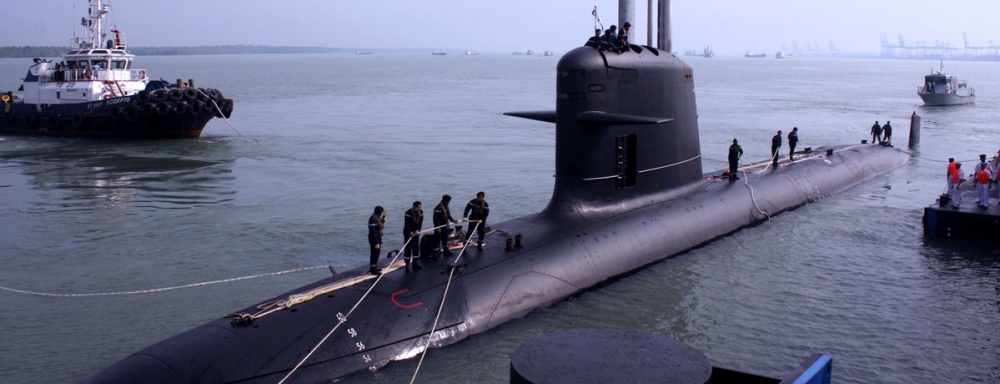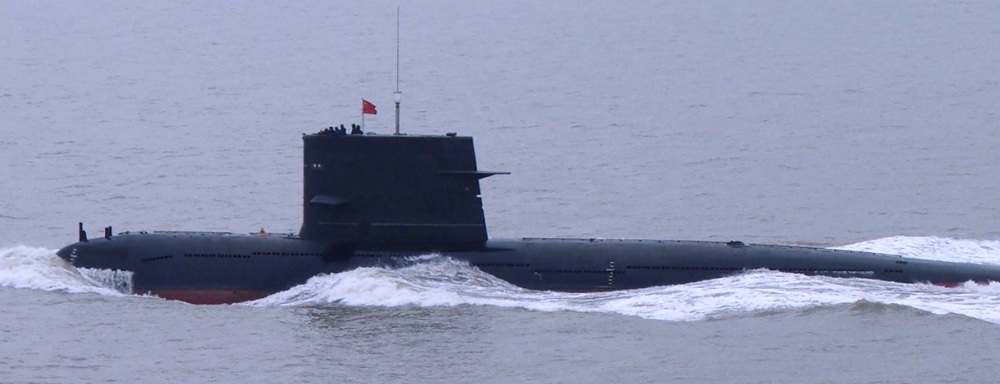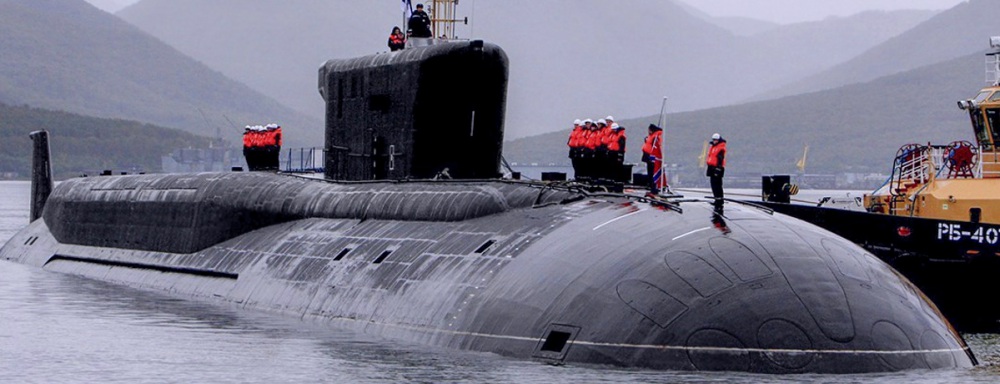
About the image
Capabilities at a Glance
Headquartered in Lumut, Perak, the Royal Malaysian Navy operates a submarine force of two Scorpène-class submarines. The Navy considers its submarines a “force multiplier” for policing its large ocean territory.1
Total Submarines in Fleet: 2
- Ballistic Missile Submarines (SSBNs): 0
- Nuclear-Powered attack submarines (SSNs): 0
- Diesel-electric attack submarines (SSKs): 2
- Air-independent propulsion (AIP) enabled: 0
Submarines
History
Starting in 1985, the Royal Malaysian Navy (RMN) sent officers to Australia, France, Germany, Pakistan, Sweden, and Turkey to gain experience in submarine operations. Partially due to financial constraints, the RMN was not able to make any official bids for submarines until 2001. Three companies expressed interest: the French state-owned Naval Group (formerly DCNS), the German-Turkish Submarine Corporation (led by Germany’s Howaldtswerke Deutsche Werft and Ferrostaal), and the Netherlands’ RDM Submarines.2 In 2002, Malaysia signed a contract with France for acquisition of two Scorpène-class diesel-electric submarines.3 As part of the submarine induction process, Malaysia also negotiated for an ex-French Agosta 70-class submarine – Quessant – to be based in Toulon for RMN crew training and instruction. Additionally, it was agreed that 156 RMN personnel were to receive training from France’s NAVFCO for four years beginning in early 2005.4 Apart from France, Malaysia expressed interest in cooperating with submarine forces of other major navies. In September 2007, RMN held talks with the United States Navy for possible cooperation in advanced submarine training and participation in future exercises. In 2021, RMN held a Marine Training Activity with assets from the US Navy, including combat ships and personnel.5
Apart from France, Malaysia expressed interest in cooperating with submarine forces of other major navies. In September 2007, RMN held talks with the United States Navy for possible cooperation in advanced submarine training and participation in future exercises. The head of the Malaysian delegation, First Admiral Dato Jamil Osman, also noted that RMN conducted separate talks for cooperation with the Royal Australian Navy.6 In January 2008, Malaysia and India deliberated extending their bilateral naval cooperation to include submarine forces.7 The RMN is keen to engage India in submarine operations and training given the Indian Navy’s vast experience operating the Scorpène-class boats.
RMN’s two Scorpène-class submarines are stationed at the newly constructed base in Sepanggar, Sabah.8 The first boat, Tunku Abdul Rahman, was launched in October 2007 and commissioned in January 2009. The second boat, Tun Abdul Razak, was launched in October 2008 and commissioned in November 2009.9
Modernization and Current Capabilities
The Malaysian Scorpène-class vessels have been modified to enhance their ability to operate in the warmer and more saline waters of Southeast Asia through a process called “tropicalisation.” While these boats are similar to others of their class, they do not have the air-independent propulsion (AIP) systems found on more advanced models. They are each fitted with the SUBTICS integrated combat management system and a sonar suite.10
In October 2012, RMN announced that it was building a second Scorpène simulator training facility at the Kota Kinabalu Royal Malaysian Navy (RMN) base. The base will be open to foreign military personnel for training. The RMN hopes to save money with this new base as it would no longer need to send its sailors overseas for submarine training.11 The building was finished in 2013.12
In 2018, the Boustead DCNS Naval Corporation (BDNC), a joint venture between Malaysian naval engineering group Boustead Heavy Industries Corporation and French shipbuilder Naval Group, finished refitting the KD Tunku Abdul Rahman. In 2020, BDNC finished refitting the KD Tun Razak.13
In February 2018, Admiral Tan Sri Ahmad Kamarulzaman, the Chief of the Royal Malaysian Navy, announced that Malaysia plans to procure two more submarines as part of its “15 to 5” Transformation Plan by 2040. The Admiral noted that these submarines will be beneficial in upholding maritime security as well as safeguarding the nation’s economy, particularly in regard to the maritime claims in the South China Sea.14 Again, budgetary constraints might delay this project.15
Ship Biographies
Scorpène-Class
Malaysia possesses two Scorpène-class, also known as the Perdana Menteri-class, submarines.16 This class of boats emphasize underwater maneuverability and stealth, with design features including a teardrop or “Albacore” hull form (with fin-mounted hydroplanes and cross-configuration tailplane), and very low acoustic, magnetic, electromagnetic and infrared signatures.17 These vessels are 66.45 meters long with a 6.1-meter-wide beam and can travel up to 20 knots when submerged. They can remain submerged for about 50 days without surfacing. Their weapons systems are capable of launching anti-ship SM 39 Exocet missiles with a range of 50 km from their 533 mm torpedo tubes.18
Import and Export Behavior
Imports
Malaysia has imported two Scorpène-Class submarines from France’s Naval Group.
Exports
Malaysia is not an exporter of submarines.
Explore the Collection
Australia Submarine Capabilities
Brazil Submarine Capabilities
Chile Submarine Capabilities
China Submarine Capabilities
France Submarine Capabilities
Germany Submarine Capabilities
Greece Submarine Capabilities
India Submarine Capabilities
Indonesia Submarine Capabilities
Iran Submarine Capabilities
Israel Submarine Capabilities
Italy Submarine Capabilities
Japan Submarine Capabilities
Your are currently on
Malaysia Submarine Capabilities
Netherlands Submarine Capabilities
North Korea Submarine Capabilities
Pakistan Submarine Capabilities
Russia Submarine Capabilities
Singapore Submarine Capabilities
South Korea Submarine Capabilities
Sweden Submarine Capabilities
Taiwan Submarine Capabilities
United States Submarine Capabilities
Submarine Detection and Monitoring: Open-Source Tools and Technologies
Stay Informed
Sign up for our newsletter to get the latest on nuclear and biological threats.
More on

China Submarine Capabilities
A highlight of global trends in the sale and acquisition of diesel- and nuclear-powered submarines by country with capabilities, imports and exports. (CNS)

Russia Submarine Capabilities
Overview of Russia's submarine capabilities and import-export behavior.
United States Submarine Capabilities
Overview of the United States' submarine capabilities and import-export behavior.
Glossary
- SSBN
- Ship, Submersible, Ballistic, Nuclear: A hull classification for a submarine capable of launching a ballistic missile. The "N", or nuclear, refers to the ship's propulsion system. SSBN's are generally reserved for strategic vessels, as most submarine launched ballistic missiles carry nuclear payloads. A non-strategic vessel carries the designation SSN, or attack submarine.
- Diesel-electric submarine
- Diesel-electric submarine: A submarine with a diesel-electric transmission. Diesel-electric transmissions require access to oxygen for the diesel generator to charge the submarine’s batteries or drive the motor. This type of submarine is thus louder and must surface more frequently than a nuclear-powered submarine. A diesel-electric submarine can fire conventional cruise missiles against land targets, and in theory, can also carry nuclear-tipped cruise missiles. Diesel-electric submarines are significantly cheaper to build and purchase than nuclear-powered vessels, which makes them the vessel of choice for smaller navies.
- Air Independent Propulsion Technology (AIP)
- Air Independent Propulsion Technology (AIP): A propulsion system that uses liquid (or compressed) oxygen or hydrogen fuel cells, thereby allowing submarines to stay submerged for longer periods without the need for external sources of oxygen. This increased endurance also increases a submarine’s survivability.
- Bilateral
- Bilateral: Negotiations, arrangements, agreements, or treaties that affect or are between two parties—and generally two countries.
- Safeguards
- Safeguards: A system of accounting, containment, surveillance, and inspections aimed at verifying that states are in compliance with their treaty obligations concerning the supply, manufacture, and use of civil nuclear materials. The term frequently refers to the safeguards systems maintained by the International Atomic Energy Agency (IAEA) in all nuclear facilities in non-nuclear weapon state parties to the NPT. IAEA safeguards aim to detect the diversion of a significant quantity of nuclear material in a timely manner. However, the term can also refer to, for example, a bilateral agreement between a supplier state and an importer state on the use of a certain nuclear technology.
See entries for Full-scope safeguards, information-driven safeguards, Information Circular 66, and Information Circular 153.
Sources
- “The Royal Malaysian Navy: Prevalence over the Malaysian Maritime Interests,” Naval Forces II, 2008, p. 102; “Malaysia Submarine forces,” Jane’s Underwater Warfare Systems, 30 March 2010; “Malaysia seals US$972 maiden deal to buy submarines,” Agence France-Presse, 5 June 2002, www.singapore-window.org.
- Richard Scott, “Malaysia acquires Scorpène submarines,” Jane’s Navy International, 1 July 2002.
- “WORLD NAVIES, Malaysia,” Jane’s World Navies, 27 February 2013.
- NAVFCO is the overseas training and facilitation branch of France’s Défense Conseil International. The RMN personnel trained at a dedicated facility in Brest.
- Dorian Archus, “Bilateral Exercise MTA Malaysia 2021 Concludes” Naval Post, 1 December 2021, http://navalpost.com.
- Dzirhan Mahadzir, “Malaysia, USN discuss submarine force co-operation,” Jane’s Defence Weekly, 26 September 2007.
- P. S. Suryanarayana, “India, Malaysia to step up defence ties,” The Hindu, 4 January 2008, www.thehindu.com.
- Institute of International and Strategic Studies, “Chapter Six: Asia,” The Military Balance, Vol. 118 (2018) p. 283.
- “Malaysia Submarine forces,” Jane’s Underwater Warfare Systems, 30 March 2010.
- “SSK Scorpene Class Attack Submarine,” Naval Technology, accessed 5 August 2019, www.naval-technology.com; Richard A. Bitzinger, “Air-Independent Powered Submarines in the Asia-Pacific: Proliferation and Repercussions,” RSIS Commentaries, 23 June 2009.
- “Sabah navy base to be ‘world’s first’ Scorpene training centre,” The Malaysian Insider, 15 October 2012, www.themalaysianinsider.com.
- “Is the Philippine Navy Ready for Submarines? A Full Background and Review on PN’s Submarine Quest,” Max Defense Philippines, 15 July 2018, http://maxdefense.blogspot.com; “Scorpenes Add ‘Muscle’ to Malaysian Navy,” Pakdin.my, 4 November 2012, http://pakdin.my/21745/.
- “RMN KD Tun Razak Submarine Completes Refit Programme,” MY Military Times, 20 Apr. 2020, http://mymilitarytimes.com; Marhalim bin Abas, “RMN’s Second Scorpène-Class Submarine Returns to Service after Refit,” Janes.com, 16 April 2020, www.janes.com.
- “Royal Malaysian Navy Looking at Two More Submarines by 2040,” NavyRecognition.com, 2 April 2018.
- Adam Leong Kok Wey, “What Can Malaysia Do with 2 Submarines?” The Diplomat, 6 July 2019, https://thediplomat.com.
- Marhalim Abas, “Defect found on Royal Malaysian Navy sub,” The Malay Mail, 10 February 2010, www.mmail.com.my; Shahryar Pasandideh, “The Royal Malaysian Navy: An Assessment,” NATO Association of Canada, 24 August 2015, http:/natoassociation.ca.
- “Scorpene,” Jane’s Underwater Warfare Systems, 10 March 2010.
- “KD Tun Abdul Razak,” Military Factory, accessed 5 August 2019, www.militaryfactory.com.
